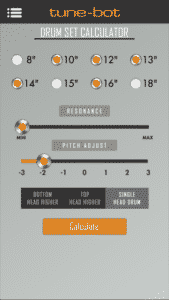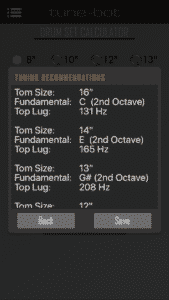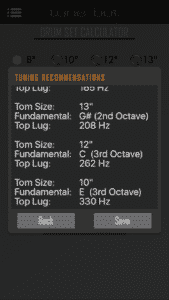Tuning Concert Toms
Posted on: April 23 2019 at 10:47 am
What are concert toms?
Concert toms are toms with only a batter head, no resonant head. Concert toms were extremely popular in the 60’s and 70’s.
Why use them?
Concert toms are very easy to tune, having only one head to deal with. You don’t have to worry about the relationship between batter and resonant head if there is no resonant head! For a concert tom the fundamental pitch is half the lug pitch in Hz, which makes it very easy to tune your drums to notes. You can get a really nice punchy sound from concert toms or you can get that very dead, dry sound that was so popular in the 70’s. In short, they have more attack and less resonance than 2 headed toms. Concert toms are easy to work with. An added benefit is that you can nest them inside each other making it easier to gig with. One of the reasons they were so popular is that they are easy to record. You can mic them from the bottom and still get a lot of attack without much resonance. Some negatives are that they are less resonant and you cannot control the resonance by adjusting the pitch of the bottom head. You cannot tune for feel with concert toms either.
How to tune them
If you are looking for that very dry 70’s sound it is quite easy to get. It is best to use a thicker head or one with a controlled sound like pin stripe, hydraulic, EC2, performance II, Studio X etc. Then you want to tune your head so that it is just tight enough to not have any wrinkles. Then check to make sure you get all the lugs tuned evenly. Next, hit the drum in the center. How does it sound? If it doesn’t sound quite right bring the drum up slightly. Also, try muffling the drum- a drum tuned this low often sound better with some muffling.
It is also very easy to get a melodic sound from your concert toms, especially with tune-bot. The same heads will work for these tunings but you probably won’t need to muffle. If going for the melodic sound I recommend tuning the drums higher than for the dry sound. If you know what note you want to tune your fundamental pitch to, tune your lugs one octave above that pitch and you will get the correct fundamental pitch. For example, if you tune your lugs to C3 (130Hz), your fundamental pitch will be C2(65 Hz). If you do not know what notes you want to tune your drums, I recommend using our drum tuning calculator. The app version of the calculator has tunings for single headed drums (website version does not). The tuning guide also helps with choosing notes. Here is a good tuning for 10”,12”,13”,14”,16″:

Make sure to select Single Head Drum


